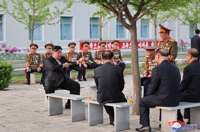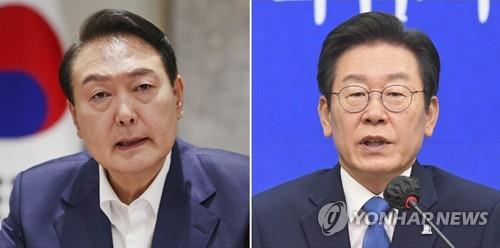(LEAD) N. Korea seems to have fired Hwasong-15 ICBM last week, S. Korea's military tells lawmakers
(ATTN: UPDATES with more info in last para)
SEOUL, March 29 (Yonhap) -- North Korea's intercontinental ballistic missile (ICBM) launched last week is assessed to be the same type it test-fired in 2017, Seoul's defense ministry told lawmakers here Tuesday, formally dismissing Pyongyang's claim that it was a brand-new one.
In a briefing to the National Assembly, the ministry said the ICBM in question is more similar to the Hwasong-15 missile than the newest Hwasong-17. It cited an analysis of the missile's flight characteristics and footage released by the North's state media.
The North has claimed success in launching the Hwasong-17 -- an ICBM dubbed a "monster" for its size. The new missile is known to have a range of around 15,000 kilometers, about 2,000 km longer than the Hwasong-15.
"Although the projectile fired on March 24 looks like the Hwasong-17 due to the increase in its top altitude and flight time, our assessment is that it is more similar to the Hwasong-15 than the Hwasong-17," the ministry said.
The ministry provided evidence suggesting the North disguised the latest launch as that of the newest missile.
It said that directions of shadows seen in the North's footage of Thursday's launch indicated the footage was taken in the morning though the actual launch took place in the afternoon.
The ministry also pointed out that the North's photos showed the missile test was conducted under clear weather though it was mostly cloudy at the launch site in Pyongyang at the time of the test.
In addition, the ministry said that it would have been difficult to carry out a successful new ICBM test following a botched test eight days earlier. The South Korean military presumes the North's failed projectile launch on March 16 involved the Hwasong-17.
Commenting on the North's intentions behind the launch, the ministry said that the North needed to deliver a "message of success" after citizens in Pyongyang witnessed an earlier failure in firing the Hwasong-17.
The North also appears to have sought to show progress in its ICBM capabilities, secure status as a military power and raise its leverage in future peace negotiations, the ministry said.
Meanwhile, the ministry reportedly told a closed-door parliamentary session that Seoul is considering "strong" steps to take in the event of another North Korean ICBM launch, including the deployment of U.S. strategic military assets.
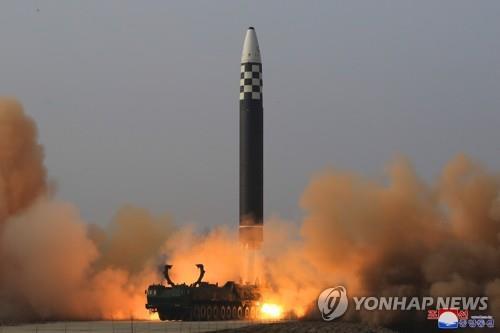
A Hwasong-17 intercontinental ballistic missile (ICBM) is launched from Pyongyang International Airport on March 24, 2022, in this photo released by North Korea's official Korean Central News Agency. The North's leader Kim Jong-un approved the launch, and the missile traveled up to a maximum altitude of 6,248.5 kilometers and flew a distance of 1,090 km before falling into the East Sea, the KCNA said. (For Use Only in the Republic of Korea. No Redistribution) (Yonhap)
sshluck@yna.co.kr
(END)
-
 'Queen of Tears' weaves rich tapestry of Korean contemporary art
'Queen of Tears' weaves rich tapestry of Korean contemporary art -
 Ateez member Yunho throws first pitch at MLB match between Dodgers, Mets
Ateez member Yunho throws first pitch at MLB match between Dodgers, Mets -
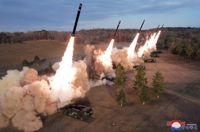 N. Korea says Kim guided simulated nuclear counterattack drills for 1st time
N. Korea says Kim guided simulated nuclear counterattack drills for 1st time -
 N. Korea calls envisioned U.S. aid to Ukraine 'hallucinogen'
N. Korea calls envisioned U.S. aid to Ukraine 'hallucinogen' -
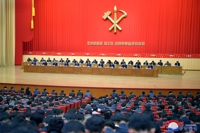 N. Korea calls on party propaganda officials to work harder
N. Korea calls on party propaganda officials to work harder
-
 'Queen of Tears' weaves rich tapestry of Korean contemporary art
'Queen of Tears' weaves rich tapestry of Korean contemporary art -
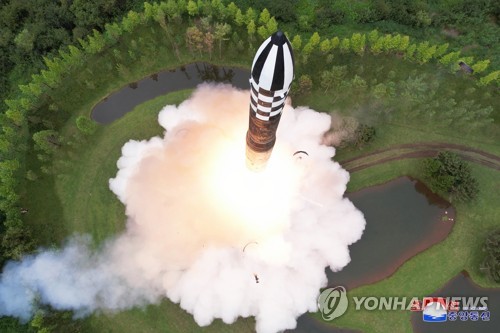 Experts see possibility of N.K. conducting nuclear test before U.S. presidential vote
Experts see possibility of N.K. conducting nuclear test before U.S. presidential vote -
 Details of meeting between Yoon, opposition leader undecided: presidential office
Details of meeting between Yoon, opposition leader undecided: presidential office -
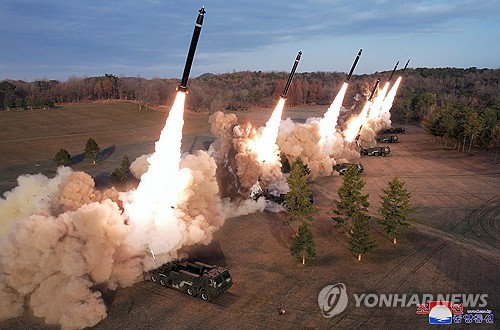 N. Korea says Kim guided simulated nuclear counterattack drills for 1st time
N. Korea says Kim guided simulated nuclear counterattack drills for 1st time -
 Looming weekly closure of major hospitals feared to worsen medical service crisis
Looming weekly closure of major hospitals feared to worsen medical service crisis
-
 S. Korea eliminated in Olympic football qualifiers as poor defense, undisciplined play prove costly
S. Korea eliminated in Olympic football qualifiers as poor defense, undisciplined play prove costly -
 10-man S. Korea lose to Indonesia to miss out on Paris Olympic football qualification
10-man S. Korea lose to Indonesia to miss out on Paris Olympic football qualification -
 (LEAD) 10-man S. Korea lose to Indonesia to miss out on Paris Olympic football qualification
(LEAD) 10-man S. Korea lose to Indonesia to miss out on Paris Olympic football qualification -
 Indonesia coach left with mixed feelings after eliminating native S. Korea in Olympic football qualifiers
Indonesia coach left with mixed feelings after eliminating native S. Korea in Olympic football qualifiers -
 (3rd LD) Hybe to file complaint against sublabel executives over internal conflict
(3rd LD) Hybe to file complaint against sublabel executives over internal conflict

















